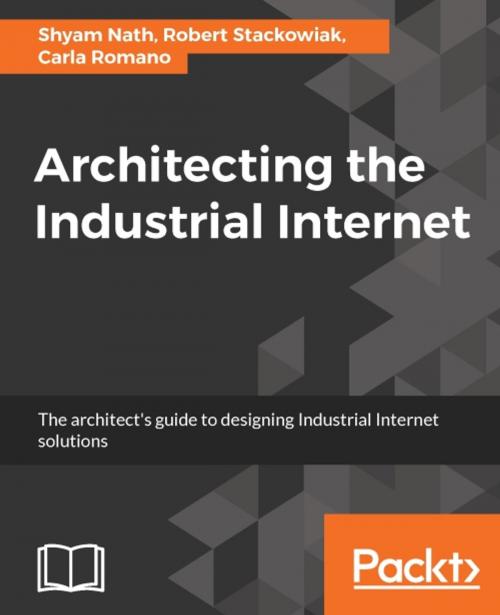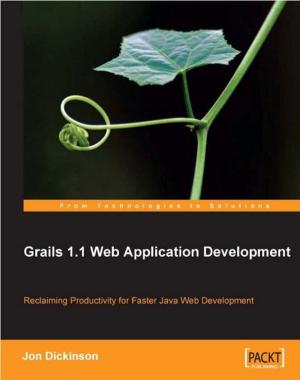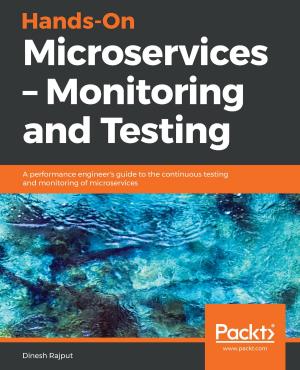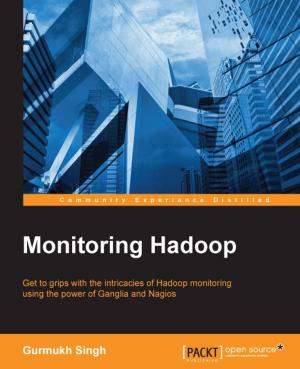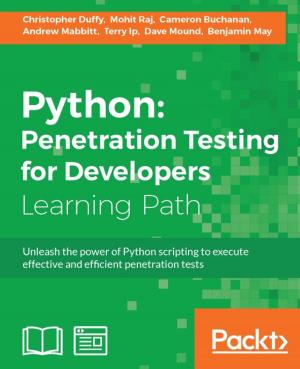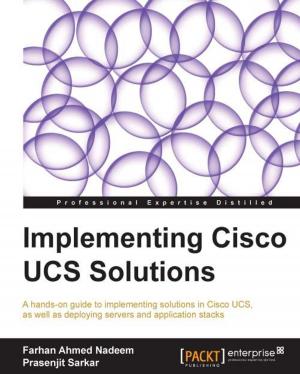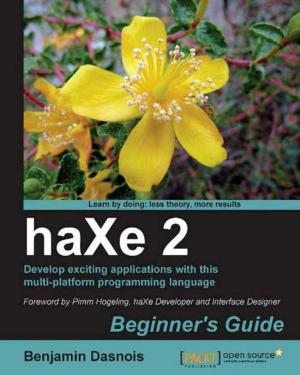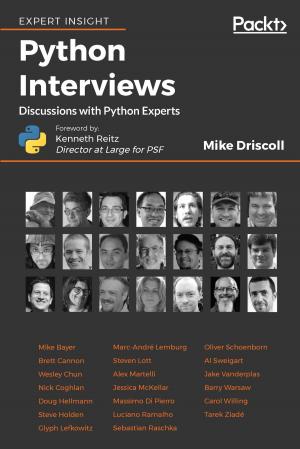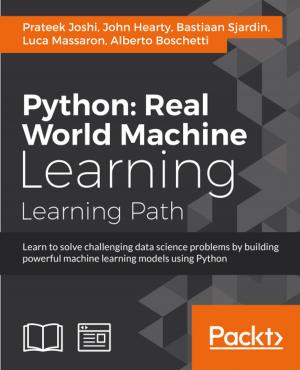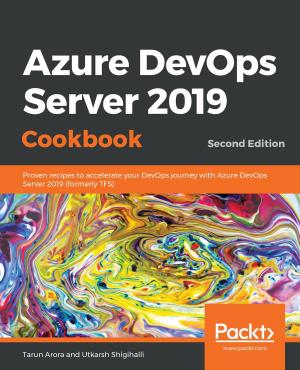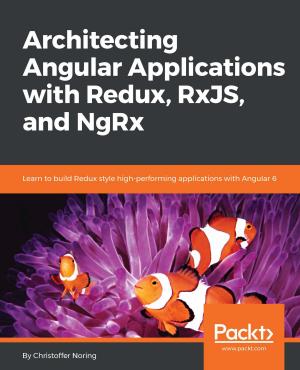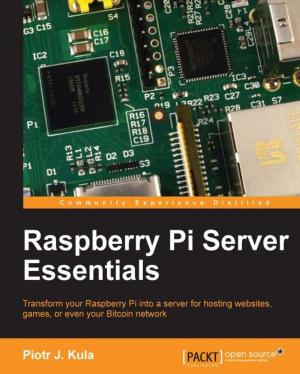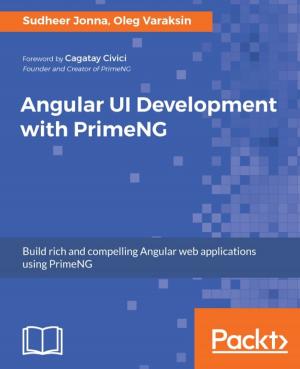Architecting the Industrial Internet
Nonfiction, Computers, Advanced Computing, Parallel Processing, Application Software, Business Software| Author: | Shyam Nath, Robert Stackowiak, Carla Romano | ISBN: | 9781787283749 |
| Publisher: | Packt Publishing | Publication: | September 22, 2017 |
| Imprint: | Packt Publishing | Language: | English |
| Author: | Shyam Nath, Robert Stackowiak, Carla Romano |
| ISBN: | 9781787283749 |
| Publisher: | Packt Publishing |
| Publication: | September 22, 2017 |
| Imprint: | Packt Publishing |
| Language: | English |
Learn the ins and outs of the Industrial Internet of Things through subjects ranging from its history and evolution, right up to what the future holds.
About This Book
- Define solutions that can connect existing systems and newer cloud-based solutions to thousands of thousands of edge devices and industrial machines
- Identify, define, and justify Industrial Internet of Things (IIoT) projects, and design an application that can connect to and control thousands of machines
- Leverage the power and features of a platform to monitor, perform analytics, and maintain the Industrial Internet
Who This Book Is For
Architects who are interested in learning how to define solutions for the Industrial Internet will benefit immensely from this book. Relevant architect roles include enterprise architects, business architects, information architects, cloud solution architects, software architects, and others. The content is also relevant for technically inclined line of business leaders investing in these solutions.
What You Will Learn
- Learn the history of the Industrial Internet and why an architectural approach is needed
- Define solutions that can connect to and control thousands of edge devices and machines
- Understand the significance of working with line of business leadership and key metrics to be gathered
- Connect business requirements to the functional architecture
- Gain the right expectation as to the capabilities of Industrial Internet applications and how to assess them
- Understand what data and analytics components should be included in your architecture solution
- Understand deployment trade-offs, management and security considerations, and the impact of emerging technologies
In Detail
The Industrial Internet or the IIoT has gained a lot of traction. Many leading companies are driving this revolution by connecting smart edge devices to cloud-based analysis platforms and solving their business challenges in new ways. To ensure a smooth integration of such machines and devices, sound architecture strategies based on accepted principles, best practices, and lessons learned must be applied.
This book begins by providing a bird's eye view of what the IIoT is and how the industrial revolution has evolved into embracing this technology. It then describes architectural approaches for success, gathering business requirements, and mapping requirements into functional solutions. In a later chapter, many other potential use cases are introduced including those in manufacturing and specific examples in predictive maintenance, asset tracking and handling, and environmental impact and abatement. The book concludes by exploring evolving technologies that will impact IIoT architecture in the future and discusses possible societal implications of the Industrial Internet and perceptions regarding these projects.
By the end of this book, you will be better equipped to embrace the benefits of the burgeoning IIoT.
Style and approach
This book takes a comprehensive approach to the Industrial Internet, thoroughly acquainting the reader with the concepts and philosophy of the IIoT. It provides a basis for defining an IIoT solution in a thoughtful manner and creating what will be viewed as a successful project.
Learn the ins and outs of the Industrial Internet of Things through subjects ranging from its history and evolution, right up to what the future holds.
About This Book
- Define solutions that can connect existing systems and newer cloud-based solutions to thousands of thousands of edge devices and industrial machines
- Identify, define, and justify Industrial Internet of Things (IIoT) projects, and design an application that can connect to and control thousands of machines
- Leverage the power and features of a platform to monitor, perform analytics, and maintain the Industrial Internet
Who This Book Is For
Architects who are interested in learning how to define solutions for the Industrial Internet will benefit immensely from this book. Relevant architect roles include enterprise architects, business architects, information architects, cloud solution architects, software architects, and others. The content is also relevant for technically inclined line of business leaders investing in these solutions.
What You Will Learn
- Learn the history of the Industrial Internet and why an architectural approach is needed
- Define solutions that can connect to and control thousands of edge devices and machines
- Understand the significance of working with line of business leadership and key metrics to be gathered
- Connect business requirements to the functional architecture
- Gain the right expectation as to the capabilities of Industrial Internet applications and how to assess them
- Understand what data and analytics components should be included in your architecture solution
- Understand deployment trade-offs, management and security considerations, and the impact of emerging technologies
In Detail
The Industrial Internet or the IIoT has gained a lot of traction. Many leading companies are driving this revolution by connecting smart edge devices to cloud-based analysis platforms and solving their business challenges in new ways. To ensure a smooth integration of such machines and devices, sound architecture strategies based on accepted principles, best practices, and lessons learned must be applied.
This book begins by providing a bird's eye view of what the IIoT is and how the industrial revolution has evolved into embracing this technology. It then describes architectural approaches for success, gathering business requirements, and mapping requirements into functional solutions. In a later chapter, many other potential use cases are introduced including those in manufacturing and specific examples in predictive maintenance, asset tracking and handling, and environmental impact and abatement. The book concludes by exploring evolving technologies that will impact IIoT architecture in the future and discusses possible societal implications of the Industrial Internet and perceptions regarding these projects.
By the end of this book, you will be better equipped to embrace the benefits of the burgeoning IIoT.
Style and approach
This book takes a comprehensive approach to the Industrial Internet, thoroughly acquainting the reader with the concepts and philosophy of the IIoT. It provides a basis for defining an IIoT solution in a thoughtful manner and creating what will be viewed as a successful project.
